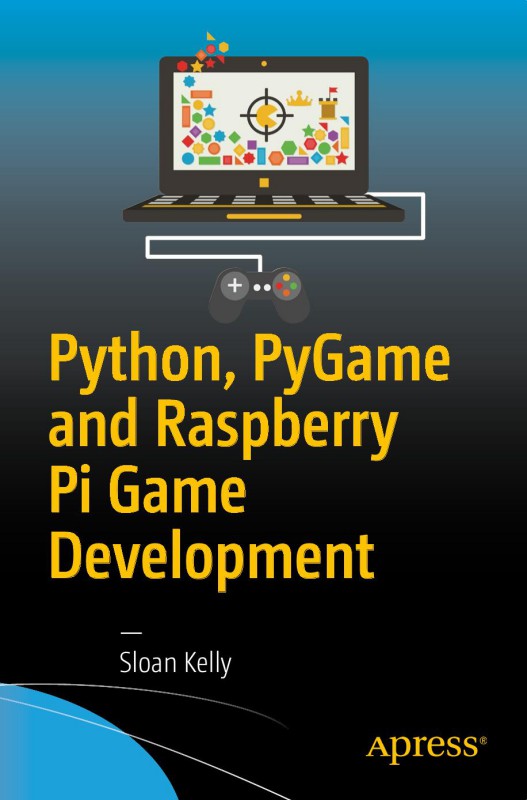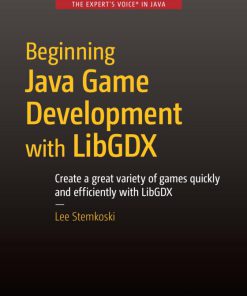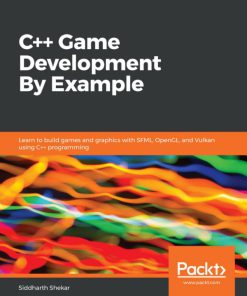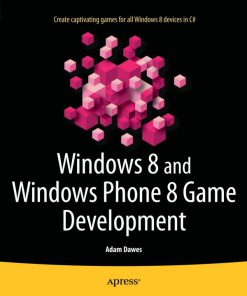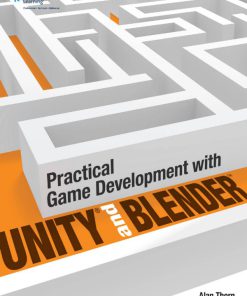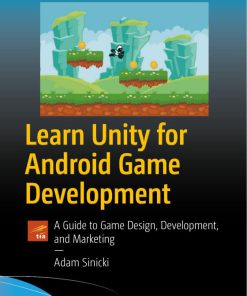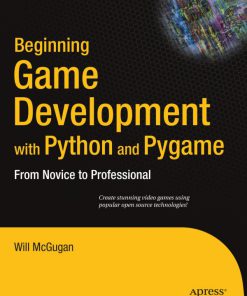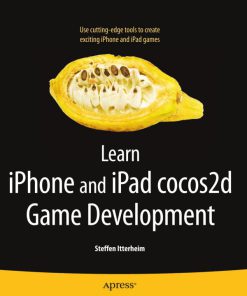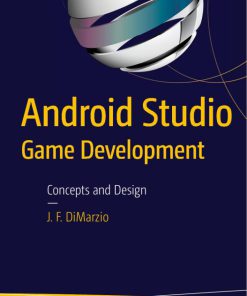(Ebook PDF) Python PyGame and Raspberry Pi Game Development 1st edition by Sloan Kelly 1484225171 9781484225172 full chapters
$50.00 Original price was: $50.00.$25.00Current price is: $25.00.
Authors:Sloan Kelly , Series:Gaming [54] , Author sort:Kelly, Sloan , Languages:Languages:eng , Published:Published:Dec 2016 , Publisher:Apress
Python, PyGame & Raspberry Pi Game Development 1st edition by Sloan Kelly – Ebook PDF Instant Download/DeliveryISBN: 1484225171, 9781484225172
Full download Python, PyGame & Raspberry Pi Game Development 1st edition after payment.
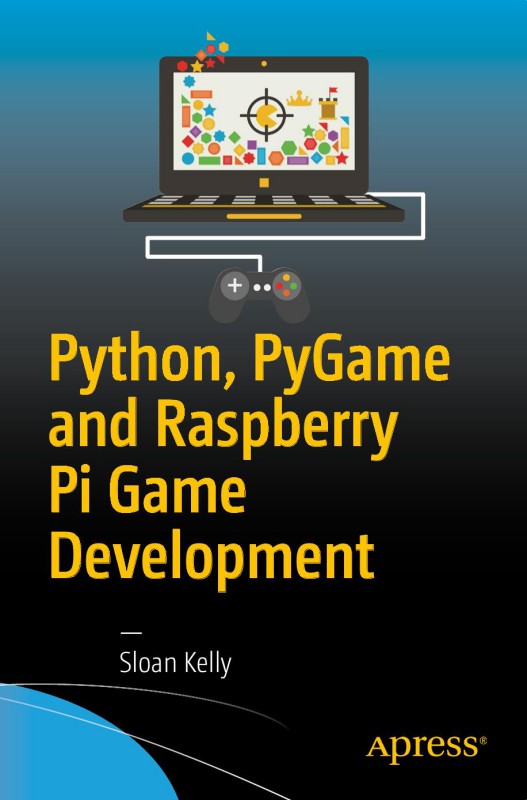
Product details:
ISBN-10 : 1484225171
ISBN-13 : 9781484225172
Author : Sloan Kelly
Gain the basics of Python and use PyGame to create fast-paced video games with great graphics and sounds. You’ll also learn about object oriented programming (OOP) as well as design patterns like model-view-controller (MVC) and finite state machines (FSMs). Python, PyGame and Raspberry Pi Game Development teaches you how to use Python and PyGame on your computer. Whether you use Windows, macOS, Linux, or a Raspberry Pi you can unleash the power of Python and PyGame to create great looking games. Included in the text are complete code listings and explanations for “Bricks,” “Snake” and “Invaders”– three fully-working games. These allow you to get started making your own great games. Modify them or build your own exciting titles. What You’ll Learn Gain the basics of Python and employ it for game development Design your game Build games using game projects as templates like Bricks, Snake, and Invaders Work with user defined functions, inheritance, composition, and aggregation Add sound to your games Implement finite state machines Who This Book Is For Experienced coders or game developers new to Python, PyGame and Raspberry Pi. This book is also for makers interested in getting into game development.
Python, PyGame & Raspberry Pi Game Development 1st Table of contents:
Chapter 1: What Is a Programming Language?
Chapter 2: What Is Python?
Programming Styles
Imperative
Object-Oriented
Functional
Conclusion
Chapter 3: Introducing Python
Python Is Interpreted
Python as a Calculator
Keywords
Printing
String Formatting
Variables
Naming Variables
Python as a Calculator, Part II
Arithmetic Operators
Data Types
String Formatting Again
Chapter 4: Breaking Free from the Interpreter
Starting a New File
Chapter 5: Making Decisions
A Note about Blocks
Testing for Equality
Using Boolean Logic
And
Or
Not
Nesting Ifs
A Note on Switch
Chapter 6: Making the Raspberry Pi Repeat Itself
The for Loop
The range() function
While Loops
Chapter 7: Containers
Container Nomenclature
Tuples
Removing Elements from a Tuple
Changing Element Values
Tuples in Printing
Deconstructing Tuples
Lists
List Creation
Adding Values to the List
Removing Values from a List
Doctor’s Waiting Room Program
Dictionaries
Iterating Through Dictionaries
Adding New Items to Dictionaries
Removing Entries from a Dictionary
Conclusion
Chapter 8: Introduction to IDLE under LXDE
Starting Pixel
Starting IDLE
Creating a New File to Edit a Program
Running Your Program
Conclusion
Chapter 9: Basic Introduction to PyGame
Importing the PyGame Framework
Initializing PyGame
The Main Loop
Images and Surfaces
Creating Images
Loading Images
Drawing Images
Screen Coordinates and Resolution
Sprite Sheets
Chapter 10: Designing Your Game
Requirement Gathering
Functional Specification
Weapon Firing
Program Design
Coding
Testing
Conclusion
Chapter 11: Game Project: Bricks
The Main Framework
Images
Moving the Bat
Bat Initialization
Drawing the Bat
Moving the Bat
Events
Quit Event
Mouse Move Event
Moving the Ball
Ball Initialization
Ball Movement
Bat and Ball Collision
Serving the Ball
Brick Wall
Brick and Ball Collision
Out of Bounds
Conclusion
Chapter 12: User-Defined Functions
What Is a Function?
Format of a Function
Functions as a Menial Task / Mnemonic Device
Sending Parameters
Default Argument Values
Named Parameters
Returning Values
Accessing Global Variables
Real-World Example of a Function
Chapter 13: File Input and Output
Reading Data from a File
Writing Data to a File
Conclusion
Chapter 14: Introducing Object-Oriented Programming
The Ball Class
Creating an Instance of the Class
The ball update() method
Constructors
SOLID
Single Responsibility
Open-Closed Principle
Liskov Substitution
Interface Segregation
Dependency Inversion
Conclusion
Chapter 15: Inheritance, Composition, and Aggregation
Inheritance
Base and Child Classes
Programming to the Interface
A Note about Constructors and Base Classes
Composition
Aggregation
Conclusion
Chapter 16: Game Project: Snake
Functions
Snake Framework
Images
Loading the Images
The Game Map
Drawing the ‘Game Over’ Screen
Drawing the Game
Drawing the Walls
Drawing the Player Data
Drawing the Snake
Updating the Game
The updateGame() method
Snake Movement
Touching a Berry
Collision Detection
Helper Functions
Losing a Life
Repositioning the Berry
Testing Snake Body Hits
Testing Wall Hits
Conclusion
Chapter 17: Model View Controller
Model
View
Controller
Why Use MVC?
The Classes
RobotModel
RobotView
RobotController
RadarView
Folder
The Model
The Robot View
The Radar View
The Robot Controller
Ensuring Constant Speed
The Main Robot Program
Conclusion
Chapter 18: Sound
Playing a Sound
Chapter 19: Finite State Machines
Game State
Menu System
Non-Player Artificial Intelligence
A Finite State Machine Example
Finite State Machine Manager
Conclusion: The Goal of FSMs
Chapter 20: Invaders
The Classes
The Finite State Machine
MVC and ‘Invaders’
The Framework
Bitmap Font
Cutting Up the Image
Interstitial Screens
The Main Menu
Player and Bullets
The Bullet Classes
The Player Classes
Testing Player
The Alien Swarm Classes
Collision Detection
Explosions
Collision Controller
The Main Program
The Main Game State
Chapter 21: Conclusion
People also search for Python, PyGame & Raspberry Pi Game Development 1st:
python pygame and raspberry pi game development
is pygame good for game development
can pygame make 3d games
pygame jobs
is python good for game development

